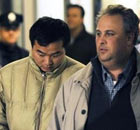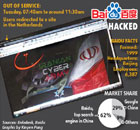Society
C-section epidemic hits China: WHO
By Shan Juan (China Daily)
Updated: 2010-01-14 08:07
 |
Large Medium Small |
Nearly one in two births in China are delivered by cesarean section, of which a quarter are not medically necessary, the latest survey by the World Health Organization (WHO) has found.
Unnecessary C-sections jeopardize women's health by raising the risk of complications, the WHO warned. And, babies born through C-section are more likely to develop respiratory problems.
"I was not aware of that," said Zhang Lin, a Beijing mother of a 2-year-old girl born by cesarean. "The doctor told me that cesarean was convenient and painless and would be quicker compared with natural birth. So naturally I chose cesarean," she recalled.
| ||||
Many maternity hospitals are motivated by financial incentives to encourage unnecessary C-sections, said Liu Shuang, a professor with the institute of population study at Renmin University of China.
Zhang recalled that she spent about 7,000 yuan ($1,000) for a C-section at a maternity hospital in Beijing where a normal birth costs around 2,000 yuan.
At Peking University Third Hospital, one of the leading hospitals in the capital, the C-section rate has been around 60 percent in recent years, according to a staff worker.
"Besides, it's more convenient and easier to arrange doctors to perform the C-section," Liu noted.
The rate of C-section has grown almost 10 times from the 1970s to reach 46 percent today, far above the 15 percent rate thought reasonable by the WHO, experts explained.
After the latest survey, the UN health agency noted that C-sections had reached "epidemic proportions" in China and many other countries worldwide, like 31 percent in the United States, 36 percent in Vietnam, and 34 percent in Thailand.
Some countries like Japan keep the C-section rate low at about 10 percent of total births in the country, according to Liu.
"The surgical baby delivery should only be used when complications develop at birth which put the mother or baby's life at risk and doctors should only perform it when necessary," he insisted.
After all, no surgery, including a cesarean, is risk free, according to Liu.
"I spent a year dealing with an abdominal scar from the C-section that kept getting infected," said Wang Ling, who had her boy five years ago by C-section.











